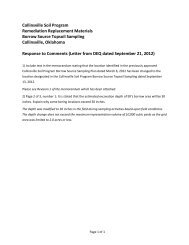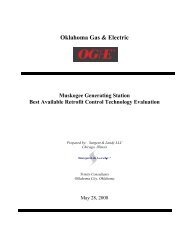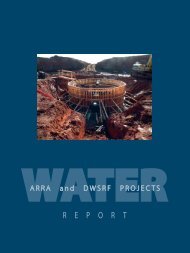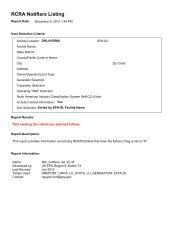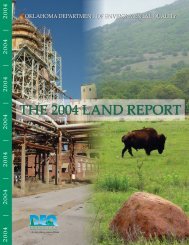Technical documentation and software quality assurance for project ...
Technical documentation and software quality assurance for project ...
Technical documentation and software quality assurance for project ...
Create successful ePaper yourself
Turn your PDF publications into a flip-book with our unique Google optimized e-Paper software.
€<br />
€<br />
reference mass<br />
mass exponent max. diam.(m) <strong>for</strong><br />
exponent(diameter) (time)<br />
10,000 kg release<br />
Lihou <strong>and</strong> Maund 0.320 0.320 74<br />
Duiser 1/3 1/6 117<br />
Fay <strong>and</strong> Lewis 1/3 1/6 135<br />
Hasegawa <strong>and</strong> Sato 0.277 0.097 67<br />
Roberts 1/3 1/3 125<br />
Williamson & Mann 1/3 1/6 127<br />
Moorhouse & Pritchard 0.327 0.327 108<br />
Pieterson 0.325 0.26 129<br />
TNO 0.325 0.26 129<br />
Martinsen & Marx 1/3 0.25 124<br />
Table 1: Reported empirical mass exponents <strong>for</strong> diameter <strong>and</strong> burn time <strong>for</strong>mulas. Note<br />
that <strong>for</strong>mulas were developed using different chemicals <strong>and</strong> definition of mass so results<br />
may not be directly comparable<br />
The time of the burn uses a slight modification of the TNO <strong>for</strong>mula (based upon<br />
averages obtained from reported literature values [TNO, 1992])<br />
t burn (sec) = 0.9mass 1/ 4 (kg)<br />
The TNO <strong>for</strong>mula assumes that the fireball <strong>for</strong>ms directly above the vessel <strong>and</strong><br />
grows in size according to<br />
D(meters) = 8.66 ⋅ mass 1/ 4 (kg) ⋅ t 1/ 3 (sec) t ≤ 1<br />
3 t burn<br />
reaching its maximum size at 1/3 of the burn time. Dynamic models of the fireball would<br />
then have the ball lift off the ground, with the center of the ball eventually reaching 3<br />
times the radius of the fireball (alternative <strong>for</strong>mulas base liftoff time as a function of<br />
mass) The ALOHA model, however, does not model the liftoff since keeping the fireball<br />
on the ground yields a more conservative answer. Also the radiation hazard footprint is<br />
based upon the maximum fireball diameter.<br />
Experiments show that the surface emissive power, E, depends upon fireball size,<br />
the actual distribution of flame temperatures, partial pressure of combustion products <strong>and</strong><br />
other factors. One common method is to estimate emissive power using the vessel burst<br />
pressure, but this is not determined based upon the limited in<strong>for</strong>mation asked the<br />
ALOHA user. Experiments by British Gas give average surface-emissive powers<br />
between 320-370 kW/m2 <strong>for</strong> hydrocarbon fuels. AICHE suggests that 350 kW/m2 is a<br />
reasonable emissive power <strong>for</strong> such fuels, using experimental results <strong>for</strong> butane <strong>and</strong><br />
propane. ALOHA adjusts this value by multiplying 350 by the ratio of the heat of<br />
combustion of the chemical divided by the heat of combustion of propane.<br />
Experimental fireballs show a reduction in peak radiation during the last twothirds<br />
of the burn. ALOHA adopts the more conservative approach by keeping radiation<br />
levels fixed at a constant level during this time period.<br />
8



